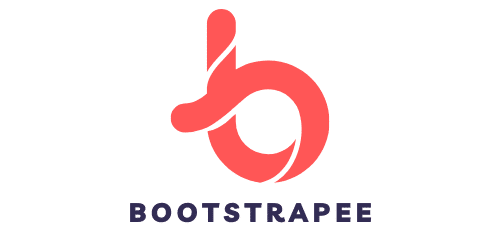The digital age has significantly changed the landscape of the music industry. The era of buying CDs and downloading songs is overshadowed by the convenience and accessibility of music streaming platforms. For independent artists, these platforms open up a wealth of opportunities to reach a global audience. However, the process of monetizing their music can be a complex and challenging task. This article will delve into the sphere of music streaming, discussing how UK independent artists can effectively monetize their content on various platforms.
Understanding Music Streaming and Royalties
Music streaming has transformed the way people listen to music. Instead of purchasing a physical CD or downloading a song, fans can now access millions of tracks through platforms such as Spotify. However, this shift also affects how musicians earn their money.
Dans le meme genre : What Are the Key Factors in Creating a Viral Social Media Challenge for a UK Brand?
Streaming platforms operate on a pay-per-stream model. Every time a song is played, a fraction of a penny is paid out in royalties. These royalties are then split between the record label, the artist, and other rights holders. However, the exact amount that an artist earns per stream can vary greatly depending on the platform and the individual artist’s agreement with their record label.
For independent artists, understanding the intricacies of streaming royalties is crucial. Unlike major label artists, independent musicians need to handle their own royalty collection. This means being aware of the different royalty types, such as mechanical and performance royalties, and ensuring these are accurately collected and distributed.
En parallèle : How to Build an Anti-Fraud Strategy for UK Online Payment Systems?
Maximizing Revenue Through Music Streaming Platforms
While the per-stream payout may seem minimal, the cumulative effect of millions of streams can result in substantial revenue for artists. The key is to maximize the number of streams, and there are several strategies that independent artists can use to achieve this.
Firstly, artists need to ensure their music is available on multiple streaming platforms. This not only increases potential stream counts, but also broadens the artist’s reach to different audiences. Each platform has its own user demographic and music recommendation algorithm, so diversifying can help artists reach more fans.
Additionally, artists should actively promote their music on social media and other digital platforms. By driving traffic to their music on streaming platforms, artists can boost their stream counts and thus their revenue.
Leveraging Features of Streaming Platforms
Different streaming platforms offer various features that artists can leverage to maximize their revenue. For example, Spotify allows artists to submit their unreleased music to their editorial team for playlist consideration. Being featured on a popular playlist can result in a significant boost in streams.
Spotify also provides artists with detailed analytics through their Spotify for Artists dashboard. This can provide valuable insights into listener demographics, which can be used to tailor promotional strategies and reach a larger audience.
Furthermore, some streaming platforms offer direct monetization features. For example, Spotify’s Tip Jar feature allows fans to directly donate money to artists. This can provide an additional revenue stream for independent musicians.
Navigating the Challenges of Streaming Royalties
Despite the opportunities offered by music streaming, the reality is that many independent artists struggle to earn a sustainable income from streaming royalties alone. The per-stream payout is often criticised for being too low, particularly when compared to the revenue generated by physical sales and downloads.
However, streaming royalties should not be viewed as the sole income source for independent artists. Instead, they should be seen as part of a broader revenue mix that includes live performances, merchandise sales, and licensing deals.
The challenge for independent musicians is to effectively navigate the complex landscape of streaming royalties, while also exploring other revenue opportunities. This requires a proactive approach and a willingness to learn and adapt as the music industry continues to evolve.
Harnessing the Power of Music Streaming to Foster a Sustainable Career
While monetizing music on streaming platforms can be a complex endeavor, it is a vital part of the modern music industry. Independent artists who can effectively harness the power of music streaming stand to reap the rewards in terms of global reach, fan engagement, and revenue.
Remember, the journey to a sustainable music career is a marathon, not a sprint. It takes time and effort to build a fan base, generate a substantial number of streams, and establish a solid income stream.
So, stay patient, keep making great music, and seize the opportunities that music streaming platforms provide. It’s an exciting time to be an independent artist in the digital age. The world is listening, and the stage is yours.
Utilizing the Power of Social Media
Social media has emerged into a potent tool for independent artists to promote their work and increase their visibility. Platforms such as Facebook, Instagram, and Twitter allow musicians to directly engage with fans, foster community, and build a loyal following.
Independent musicians can utilize these platforms to share behind-the-scenes content, announce new releases, and promote their music on streaming platforms. The power of social media lies in its ability to reach a global audience at a minimal cost. However, it’s essential to have a consistent and engaging presence to maintain and grow your following.
Artists can also use social media as a feedback mechanism by engaging with their audience, responding to comments, and understanding what resonates with their fans. This invaluable feedback can be used to tailor their music, thus creating a deeper connection with the audience.
Moreover, artists can use social media advertising to reach a broader audience. Platforms like Facebook and Instagram offer targeted advertising options that allow artists to reach potential fans based on their music preferences. By driving this targeted traffic to their music on streaming services, artists can significantly boost their stream counts and, consequently, their revenue.
Exploring Other Revenue Opportunities
Monetizing content on streaming platforms is not the only way independent artists can generate income. There are a variety of other opportunities that musicians can explore to supplement their streaming revenue.
Live performances are a significant source of income for many musicians. They not only generate ticket sales but also provide an opportunity to sell merchandise and physical copies of their music. However, given the current global situation, many artists have started to explore virtual performances through live streams and virtual concerts.
Moreover, licensing deals can provide a substantial income source for independent artists. This involves granting rights to use their music in movies, TV shows, commercials, or video games. Such placements not only provide immediate income but also expose the artist’s music to a broader audience, potentially driving more streams on their music.
In addition, artists can also generate income through fan-funded platforms like Patreon and Bandcamp, where fans can directly support their favorite musicians by contributing a monthly amount in exchange for exclusive content or experiences.
Conclusion: Embracing the Digital Age
The landscape of the music industry has changed dramatically with the advent of digital technology and streaming platforms. It’s an undeniably challenging ecosystem for independent artists, who must navigate a complex web of streaming royalties, promotion techniques, and revenue opportunities. However, these challenges also present unique opportunities for innovation and resilience.
Independent artists have the power to control their careers like never before. They can directly engage with fans, make strategic decisions about their work, and leverage the global reach of streaming services and social media. Despite the difficulties, independent artists can cultivate a sustainable career in the digital age.
The key to success lies in understanding the landscape, being proactive, and leveraging the available resources effectively. Whether it’s maximizing your presence on streaming platforms, harnessing the power of social media, or exploring other revenue opportunities, every strategy contributes to building a sustainable career.
While the journey may seem long and challenging, it’s important for artists to stay patient and persistent. The world of music is evolving, and independent artists are at the forefront of this change. So, keep creating, keep engaging, and keep exploring. Your music has the power to reach millions, and the digital stage is all yours.






